
Maserati Quattroporte engines, drive and performance
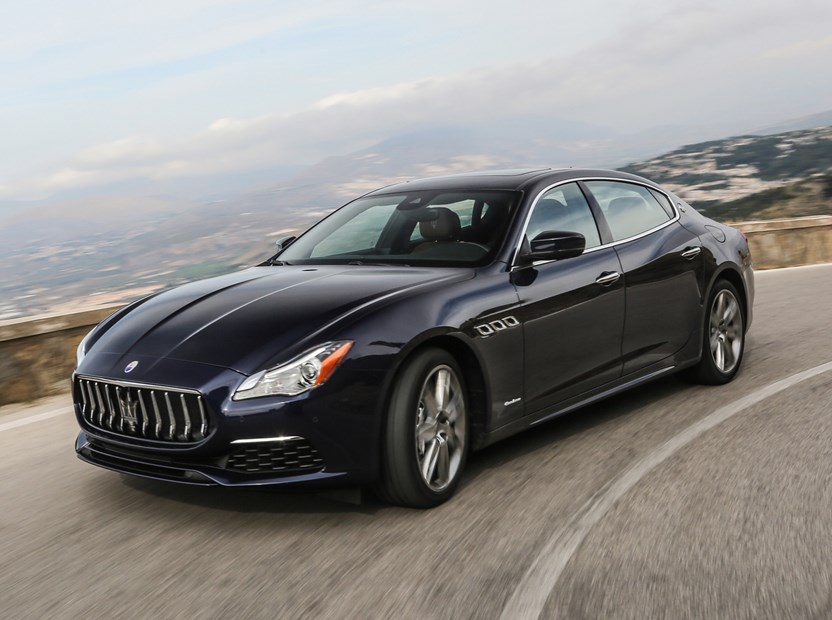
- Diesel engine appeals to the head…
- But the petrols will delight your heart
- Near supercar performance for the GTS
There’s not a four-cylinder engine in sight here and certainly nothing below the 275hp mark – expect powerful performance whichever Quattroporte you choose.
All three engines use an eight-speed automatic gearbox made by ZF. It’s a great transmission which enables you to drive smoothly and quietly under normal running conditions despite the massive amount of power on tap.
To fully exploit the car you’ll want to select the Sport drivetrain mode which sets up the gearshifts, throttle response and stability control system for enthusiastic driving. It also makes the exhaust louder and is worth activating for this purpose alone.
There is a fully manual mode, which on the Standard and GranLusso models is controlled using forward and backwards movements on the gearshifter. The GranSport gets standard steering-wheel mounted paddles that are optional on the other two cars.
Single diesel engine
If you’re a company car driver or interested in keeping your running costs down – relatively speaking – then the 3.0-litre V6 diesel should be jumping off the page at you.
It’s made by engine builder VM Motori rather than Maserati, and is also used in the Ghibli saloon and Levante SUV.
It features AdBlue technology, calling upon a refillable detergent to help reduce Nitrous Oxide (NOx) emissions from the exhausts.
You get a single turbocharger to help boost power to 275hp but more importantly you get 600Nm of torque (more than the V6 and only a little less than the V8) between 2,000-2,600rpm.
There is a slight delay as the diesel unit gets into its stride but from there to the arrival of peak power at 4,000rpm there is strong acceleration, leading to a 0-62mph time of 6.4 seconds, with a top speed of 156mph.
It even sounds good, although a little clattery at start-up and at low speeds, but this gives way to a deep and bassy rumble as you pick up momentum. It’s not as appealing as the petrol engines but it sounds very good indeed for a diesel.
Duo of sporty petrol engines
Here is where the heart of the Maserati lies and it starts with a 3.0-litre V6 petrol engine producing 410hp and 550Nm of torque thanks to two turbochargers for the Quattroporte S.
This entry petrol unit delivers its power a bit earlier than the diesel and across a wider rev range, with torque plateauing from 1,750rpm to 5,000rpm. It’s quicker too with a top speed of 177mph and 0-62mph time of 5.1 seconds.
Although it is less powerful than the V8, this model carries less weight overall and specifically over the front wheels, leading to more agile direction changes.
Like the larger engine, the V6 petrol is developed by Maserati in partnership with Ferrari and is built by the latter in Maranello.
While your head might be telling you to buy the diesel it’s the GTS’s V8 that delivers the most emotional response. It also follows the long Maserati lineage of eight-cylinder powerplants.
Unlike its predecessors, the Quattroporte’s twin-turbo, 3.8-litre unit delivers 530hp at 6,800rpm and has a mid-range torque-punch of 650Nm (or 710Nm on overboost) from 2,000-4,000rpm.
It’s smaller than before but has the class-highest specific output (amount of bhp per litre of displacement) and the highest specific torque too. This engine packs a lot of power for its size.
As you would expect, 0-62mph occurs quickly – in just 4.7 seconds – making this car the fastest accelerating four-door in Maserati’s history. Top speed of the GTS? 192mph.
- Handling improves in Sport mode…
- But ride quality suffers as a result
- Greater agility than most in this segment
The first thing to remember when getting behind the wheel of the Quattroporte is despite its body-shrinking styling, this is a big car with a long wheelbase and plenty of weight to move around.
That said, it manages this bulk very effectively, with minimal body roll present, especially when you activate the Skyhook adaptive dampers’ sportier setting.
While some multi-mode suspension set-ups on other cars are indistinguishable, the Quattroporte presents two distinct driving experiences at the press of a button.
In normal driving conditions it is on the firm side but compliant, with lumps and bumps isolated from the cabin and very little sway from the body. The steering is light and reactive to inputs but not twitchy, helping you smooth out sweeping corners rather than darting across the road.
Press the damper switch next to the gearshifter and everything firms up, the wheel becomes weightier and more sensitive, and the body feels even more tied down. In truth it’s a bit too solid for our lumpy roads and your passengers won’t thank you for leaving it selected for too long.
A better compromise is to sharpen up the drivetrain and leave the suspension alone, resulting in fast and bullish performance with a ride more suited to transporting important dignitaries.



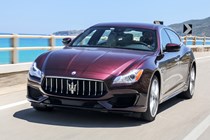
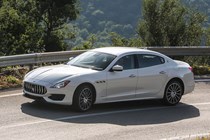

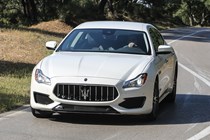
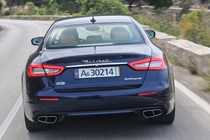
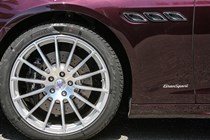
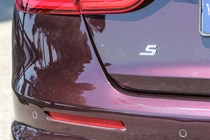
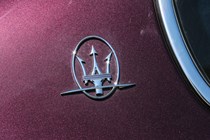
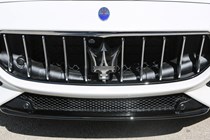
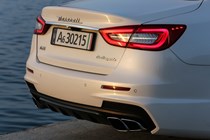
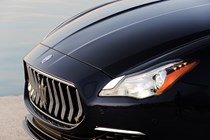
.jpg)
.jpg)
.jpg)
.jpg)
.jpg)
.jpg)
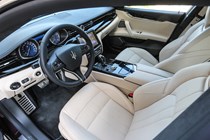
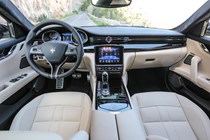

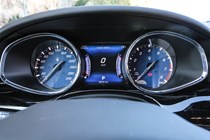
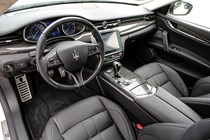
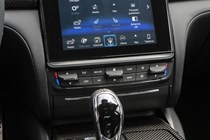
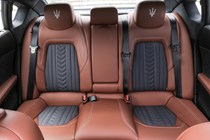
.jpg)
.jpg)
.jpg)
.jpg)
.jpg)
.jpg)
.jpg)
.jpg)
.jpg)

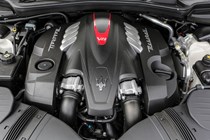
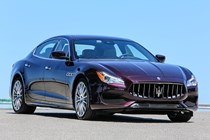
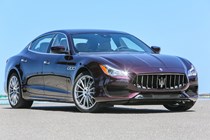
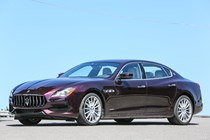
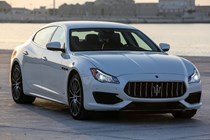
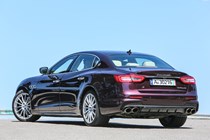
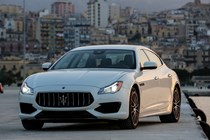
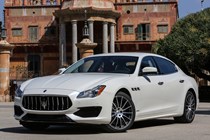
.jpg)
.jpg)
.jpg)
.jpg)







.jpg?quality=50)
.jpg?quality=50)
.jpg?quality=50)
.jpg?quality=50)












.jpg?quality=50)
.jpg?quality=50)
.jpg?quality=50)
.jpg?quality=50)
.jpg?quality=50)
.jpg?quality=50)







.jpg?quality=50)
.jpg?quality=50)
.jpg?quality=50)
.jpg?quality=50)
.jpg?quality=50)
.jpg?quality=50)
.jpg?quality=50)
.jpg?quality=50)
.jpg?quality=50)

